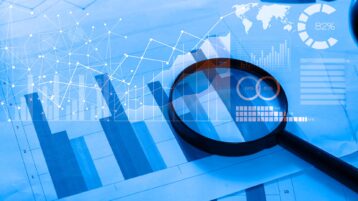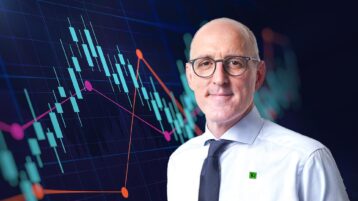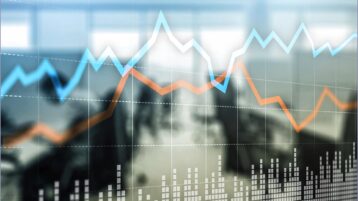The U.S. Federal Reserve has aggressively raised rates in an attempt to temper an inflation rate that rose last month at its fastest pace since December 1981. Anthony Okolie speaks with James Marple, Senior Economist, TD Bank, about the implications for the U.S. economy.
- The Federal Reserve hiked interest rates 75 basis points, as was pretty much expected by the markets, and the Central Bank also signaled that future rate hikes could be coming as well. James, what got your attention today?
- Well, a couple of things. One, this was a release that also came with the summary of economic projections, where members of the Fed also updated their outlook for growth and for inflation and for employment and, of course, for the future path of the Fed funds rate. And what was particularly striking is, unlike their past forecasts where they had the unemployment rate holding at 3.5% as they hiked rates, they now have increased the amount that they expect to increase rates but also lowered their expectations for economic growth.
They brought down how much they think the economy could grow at to under what is considered the so-called potential running speed of the economy. So they do see some real economic impact of their rate hiking, and they also have the unemployment rate moving higher, moving higher even than their long-term expectation for it to be around 4%. They have it getting above 4.1%.
And the other thing, of course, is they really increased their expectations for rate hikes-- I mean, 100 basis point difference in where they had previously in March anticipated the rate to be in a couple of years versus where they see it now, so getting up as high as 3.75 percentage points. So still a long ways to go from where we are today. And so, I mean, I think what they're saying is they maybe were behind the curve, and they-- but they've got religion, and they understand that they need to get prices back to target. And to do that, they may have to sacrifice some economic output and some employment.
- Yeah, and I want to focus on that point because you highlight the differences between March and now. What does that tell you about how worried the Fed is about inflation given this shift in tone at this FOMC meeting?
- Well, we've seen inflation prints continue to surprise on the upside. They've been-- initially, they were telling a story that inflation was transitory. They've obviously shifted their position on that, but they haven't been just-- they haven't been getting any luck on some of the supply challenges. And, obviously, the ongoing conflict in the Ukraine is continuing to cause commodity prices across the board and energy prices to remain high.
But they're also now seeing signs that some of that is seeping into services, prices. And really, you have not only that inflation is high, but it looks like-- it's much more difficult to tell a story that it's in any way idiosyncratic. It seems much more broad-based. So I think that, obviously, the concern is at this point you are also starting to see it lift expectations for future inflation and show up in what people expect in terms of wages. And once it's embedded in wages and really changing people's expectations for the future, it becomes a much more difficult nut to crack and more difficult to turn the other way.
So yeah, I mean they're worried. I wouldn't say necessarily they're panicking yet, but they're definitely treating this as something that will require, again, even potentially some sacrifice in terms of the real economy in order to stem inflation.
- And you talk about all these factors, the supply chain. In addition to the fact that consumer expectations appear to be becoming unmoored now, do you think that this latest move is enough from the Fed to get ahead of inflation?
- Well, I do think we are starting to see some signs that demand is slowing, and obviously, the Fed can do very little to impact some of these supply chain challenges, especially on the global front. But they can impact demand, and we saw today a retail sales report that came in under expectations even in nominal terms. I mean, what we had been seeing in previous months is that still strong nominal spending, but the majority of it was increase in prices. But now you're starting to see even signs that some of those nominal indicators are weakening.
We've heard department stores like Target have to actually say that we have too much inventory on hand. That means probably that they're going to have to lower prices. So I think some of those goods prices are showing some signs of decelerating, and I think on the services side, obviously, we'll have to continue to watch wage growth and watch the job market. But seeing these leading indicators of slowing, especially in interest rate-sensitive sectors of the economy, housing is slowing, mortgage. We've seen mortgage applications start to come in.
I mean, the transmission of monetary policy is working the way we expect it to, the way we think it should, and that should slow inflation. I think the question is how quickly it happens-- there's much less certainty on that-- and whether it can happen without pushing the economy into an outright downturn.
- And, of course, with rates-- with the rate hikes getting more aggressive, I hate to bring up the dreaded R word, but what does this do to concerns about the threat of a recession?
- Well, you saw it in the Fed's own projections, in their summary of economic projections. They have growth with a one handle on it, 1.7% economic growth. I mean, that's not a lot of margin before you get to zero. We consider a recession any time the economy is contracting, growing below 0%, and the unemployment rate's rising.
Well, they have the unemployment rate rising in their summary of economic projections. So it's a small margin. I mean, a lot of things could go right. There's a lot of reasons to expect the economy to remain resilient. Households have large savings that they can continue to ride out some of the inflation. We see pretty strong balance sheets across the board, not a lot of signs in North America of financial distress.
But it's going to be challenging, and as I said, they need to get a bit of luck on the inflation front. If they can see some of those inflationary forces start to diminish, maybe some of the things that they can't control, while at the same time sort of gradually slowing demand, then maybe, just maybe, we'll have a soft landing and avoid recession.
- Now, one of the areas in the markets that has done extremely well, of course, is the US dollar, which has strengthened against a basket of other currencies. What are your thoughts on the US dollar? Where do you see it potentially going in the next little while?
- Well, I think as long as the Fed is leading the charge in terms of rate hikes, the dollar will remain well-supported. We've seen in Europe, for example, some concerns as the ECB starts to raise policy around its impact on bond yields throughout the Euro area. And you're seeing widening spreads between sovereigns, between Italy and Germany, and that kind of puts a bit of a constraint on how fast they can normalize policy. They've also seen a lot more of their inflation related to supply issues, not perhaps so much demand-driven. But I think as long as there is-- the Fed is continuing to be aggressive and hiking rates, I think the dollar will remain pretty well supported.
- James, thank you very much for joining us today.
- You're very welcome, Anthony.
[MUSIC PLAYING]



























